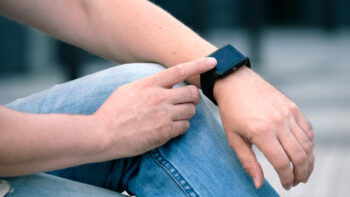
In the past, preventive care meant annual checkups and routine bloodwork. But the future is looking way more data-driven and personal. Smartwatches are tracking early signs of illness, DNA tests are revealing genetic vulnerabilities, and predictive health platforms are turning information into action.
The next wave of wellness isn’t just about responding faster; it’s about knowing what’s coming and making smarter choices before issues even surface. Welcome to the era of health forecasting.
The Shift Toward Predictive Prevention
Preventive care is moving from reactive to proactive. Instead of waiting for symptoms, people are using technology to track subtle changes that predict health risks, like elevated heart rate variability, sleep interruptions, or blood oxygen dips. With real-time feedback, you can catch trends early and adjust your habits before they become health problems.
- Smartwatches like the Apple Watch and Fitbit Sense monitor heart rhythms for signs of atrial fibrillation.
- Continuous glucose monitors (CGMs) like Levels or Freestyle Libre show how your diet affects blood sugar, even if you’re not diabetic.
- Sleep trackers reveal patterns that correlate with stress, hormonal shifts, and even early burnout.
This shift isn’t just about awareness. Each data point is a clue, showing how your choices ripple across your entire system. Preventive care is no longer a once-a-year event. It’s becoming a continuous feedback loop.
Your DNA as a Health Roadmap
Genetic testing has evolved beyond ancestry curiosity. Modern DNA testing is becoming a cornerstone of preventive medicine by showing how your body metabolizes food, processes medications, or reacts to environmental factors. Knowing your biological blueprint can help you customize everything from diet to fitness to mental health strategies.
- Companies like 23andMe Health + Ancestry and Invitae provide insights into genetic risks for heart disease, diabetes, or certain cancers.
- Nutrigenomic tests help tailor nutrition by showing how your body handles fats, caffeine, or carbohydrates.
- Pharmacogenomic panels help doctors choose medications that work best with your genetic profile, reducing side effects and trial-and-error.
But DNA isn’t destiny; it’s direction. Understanding your genetic tendencies lets you build a proactive plan that aligns with your biology. The key is turning that data into decisions, such as eating for your metabolism, training based on your muscle composition, and staying alert to risks before they become reality.
Smart Devices and the Rise of Health Ecosystems
The future of preventive care is connected, literally. Smartwatches, smart scales, sleep sensors, and even bathroom mirrors are now syncing data into cloud-based dashboards. These ecosystems give you and your healthcare team a 360-degree view of your well-being.
- Oura Ring, Garmin Venu 3, and Whoop 4.0 track biometrics like readiness, strain, and recovery.
- Withings Body Comp and similar smart scales measure vascular age and body composition.
- Smart mirrors like CareOS analyze skin health, posture, and hydration through AI scanning.
These aren’t gimmicks; they’re gateways. When integrated with apps like Apple Health, Google Fit, or MyFitnessPal, they reveal correlations between behavior and biology. A poor night’s sleep might link to a lower workout recovery score or higher resting heart rate — small insights that lead to bigger lifestyle shifts.
AI-Driven Health Forecasting
Artificial intelligence is becoming the brain behind preventive care. Instead of relying solely on raw numbers, AI interprets complex data patterns. Spotting subtle health changes humans might miss. It’s like having a personal analyst for your biology.
- Google’s Project Baseline and IBM Watson Health use AI to detect disease risk through massive datasets.
- Startups like Viome and Zoe use machine learning to recommend food and supplement choices based on microbiome and metabolic data.
- Wearables now alert users to anomalies — like the Fitbit Sense flagging elevated stress or the Apple Watch detecting irregular heart rhythms before symptoms appear.
AI’s advantage is scale. It learns from millions of users, making predictions more precise. In the near future, we’ll see platforms that not only monitor but also forecast health outcomes, offering personalized preventive strategies down to the hour.
Data Privacy and the Ethics of Forecasting
Of course, more data means more responsibility. As health forecasting expands, so do concerns around privacy, consent, and data ownership. Who controls your health data — you, your doctor, or the tech company?
- Read the fine print. Some DNA services sell de-identified data to pharmaceutical research.
- Choose platforms that allow data portability so that you can export your information anytime.
- Use strong privacy settings in wearable apps and limit sharing to what’s necessary.
Preventive care tech is powerful, but trust is everything. The goal is empowerment, not exposure. Owning your health data means you stay in control of your story, not just your stats.
What Health Forecasting Means for You
Preventive care is no longer about waiting for a doctor’s warning. It’s about using everyday tools to build awareness and resilience. The more your data ecosystems connect, the smarter your decisions get.
- Use a smartwatch or fitness tracker for real-time insights.
- Consider a genetic or microbiome test to personalize your habits.
- Connect your data to one central hub — and review trends monthly, not yearly.
- Don’t chase every new device; choose ones that fit your lifestyle.
As these tools evolve, preventive care will likely merge more closely with daily life. Your smartwatch could schedule recovery days based on stress trends, or your mirror might suggest hydration reminders when your skin looks dull. Even home assistants may join in, using voice data to detect fatigue or early illness.
The line between healthcare and lifestyle will blur, and that’s a good thing. Prevention will become less about appointments and more about awareness, woven into the rhythms of everyday living. The ultimate goal isn’t just longevity; it’s living better, with insight guiding every decision.
The future of health is predictive, but it’s also practical. It’s about using information as a form of prevention. In a world where your watch can sense stress and your DNA can flag risks, the smartest move is simple: stay curious, stay proactive, and use your data to design the healthiest version of your life.
By Admin –



